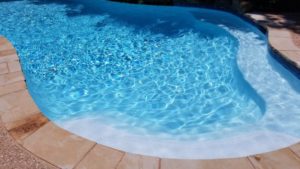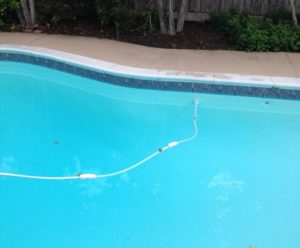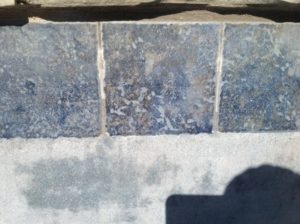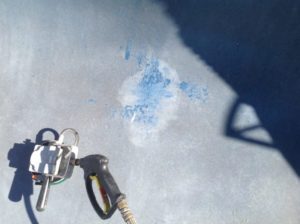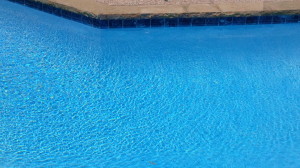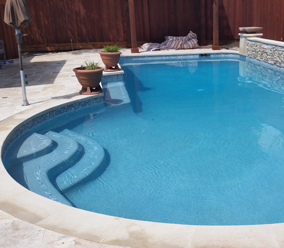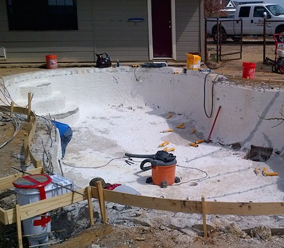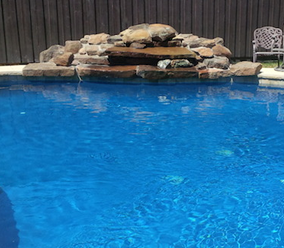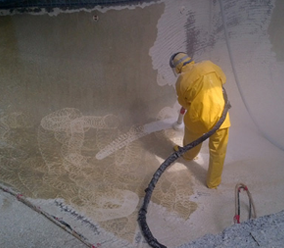So, you want to plaster your pool. You just want White Plaster because you say you do not need anything fancy and just want the plain old school white plaster. That is perfectly fine but you must hear or read this first.
Putting White Plaster in your pool today is like putting an 8-Track Cassette Player in your brand-new Car. It is antiquated technology. There are far more advanced finishes out there that incorporate quartz, pebbles, pozzolans, and cement polymers. You can get those finishes in all white also. White Plaster today is not the same as it was 20 years ago, and you should not settle for it.
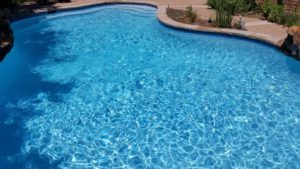
I want to introduce you to Ultra-Poz.
Ultra-Poz is a unique polymer and pozzolan modified pool interior finish. Ultra-Poz has the highest levels of blended polymers and pozzolans available in the market today. It is mixed with a natural aggregate, colored quartz, and a white cement that produces an extremely durable rock-hard surface.
Utra-Poz is far better than a White Plaster finish or a simple 50% Quart Plaster. Ultra-Poz will out perform both of those finishes.
Simply adding quartz to plaster is good but if you do not modify the cement binder you are not protecting the plaster from the most common failure. Ultra-Poz addresses both sides of the critical issues and produces one of the most durable finishes on the market today. The unique modifiers and mineral additives densify the surface, thus increasing the resistance to chemical deterioration.
Ultra-Poz can also be polished. This exposes the quartz beautifully. This can be done when originally installed or at any time in the future for an extra cost.
G&B Tile and Plaster is the only applicator for Ultra-Poz in Texas currently. Previously only available in Arizona. G&B Was chosen for this opportunity because of our 10 Year Bond Guarantee. At G&B we strive to offer the best processes and finishes.
Chlorine tablets create high CYA
The use of chlorine tablets are a problem for swimming pools. They work well as a sanitizing system if your pool water is perfectly balanced. However the use of those tablets ensures your pool will soon be out of balance. This is due to the CYA and other chemicals that are built into the tablets along with the chlorine.
If your pool water is out of balance, the chlorine tablet is not as effective. You think using more and more chlorine will solve the constant algae issue your pool has, but is doesn’t get any better. You will eventually figure out that the CYA is too high which limits the chlorine effectiveness. You are forced to drain your pool and dilute the CYA that accumulates by adding fresh water. It is necessary to do this to protect your plaster, but it is not an environmentally friendly action.
Commercial swimming pools are required by the health department to keep the CYA in the pool below 100 ppm. If it gets over that level the health department will force the closure of the swimming pool until that is corrected and re-inspected. The only solution for high CYA levels is to drain the pool and replace the water with fresh water. This has been the norm for several years, but environmentally it is not a good idea to continue this practice.
Every time a chlorine tablet dissolves CYA is added to your pool water. Several other chemicals that allow the chlorine to have a longer shell life are built into that tablet and are also added to your pool water. The lack of those chemicals in your pool water when you use a salt system are actually the reason the pool water in those pools feel much better than pools on chlorine tablets. It is not because of the salt in the water
CYA, commonly sold as a stabilizer or conditioner will damage your pool plaster investment if left unchecked. Pools with colored finishes cannot maintain their intended color in high CYA level pool waters. Every time a chlorine tablet dissolves and every time the pool is shocked with granular chlorine the CYA value will increase. Your plaster investment must be protected against high CYA values.
Stay tuned for a solution to wasting water and high CYA values in your pool. G&B will be releasing this must have information on Wednesday the 12th.
50% Quartz is better than white plaster.
50% Quartz is better than white plaster.
In one of the tests performed at the National Pool Industry Research Center, 50% Quartz finishes were evaluated to determine if they perform better than standard plaster. The testing was done to see at what ratio the quartz addition improved the performance of the finish, if at all.
The testing reported a 30% reduction in surface deterioration in quartz mixes of at least 50% when compared to standard plaster with no quartz additions. This means that less surface deterioration occurs in plaster finishes that have 50% of the aggregate weight as quartz. Quartz is inert and will not react with water chemistry. 50% Quartz will perform better than standard plaster.
Quartz finishes of at least 50% will improve the performance of your plaster investment as compared to standard plaster. You can chose from a variety of colors, however most choose blue quartz. The 50% quartz will not only improve the performance (as long as it is at least 50%) of that finish but will also give the water a hint of color.
The addition of quartz at a lesser concentration than 50% quartz will not offer any quality benefit. Just like adding dye to standard plaster, it will only add to the cost of the plaster investment. You need at least 50% quartz to improve the performance of the plaster finish.
In order to receive the best benefit of a quartz additive to your plaster investment a 100% quartz finish is the right decision. Though a 50% Quartz will improve your finish as compared to a standard plaster, a 100% quartz finish will be as good as any finish you could invest in for your pool.
It is ultimately up to you how long a plaster finish lasts in your pool. It cannot be over stated how important balanced water chemistry is relative to the long term success of your plaster finish



